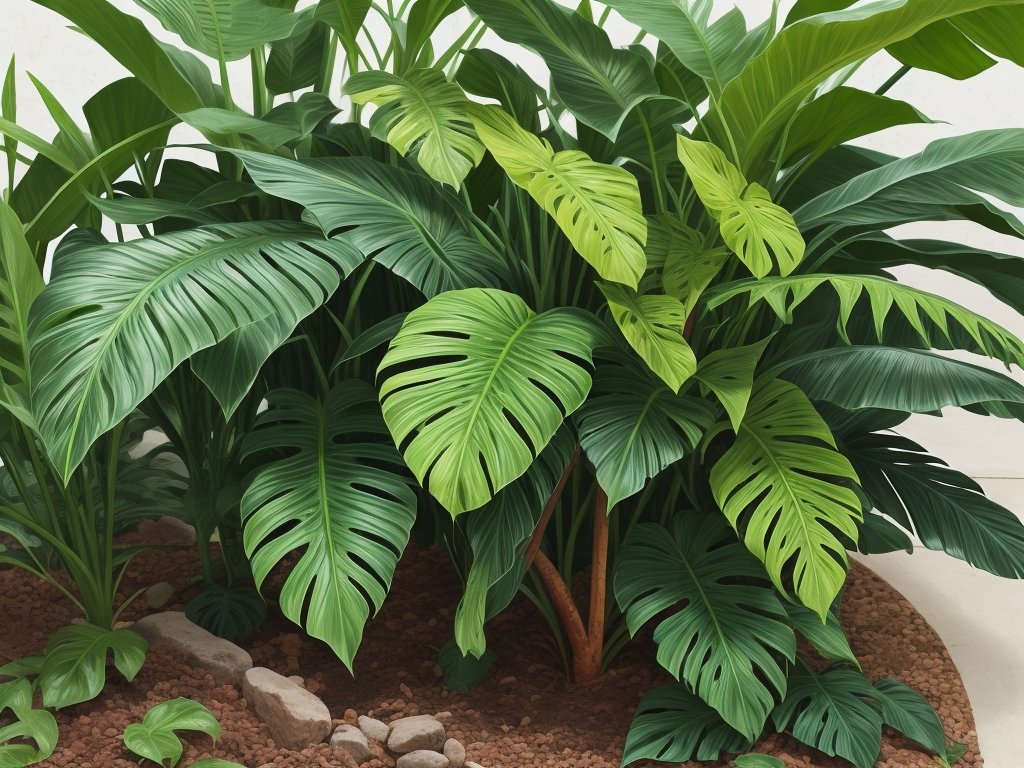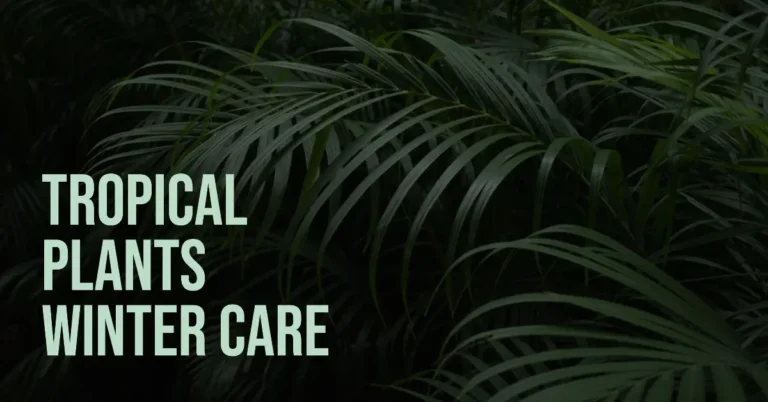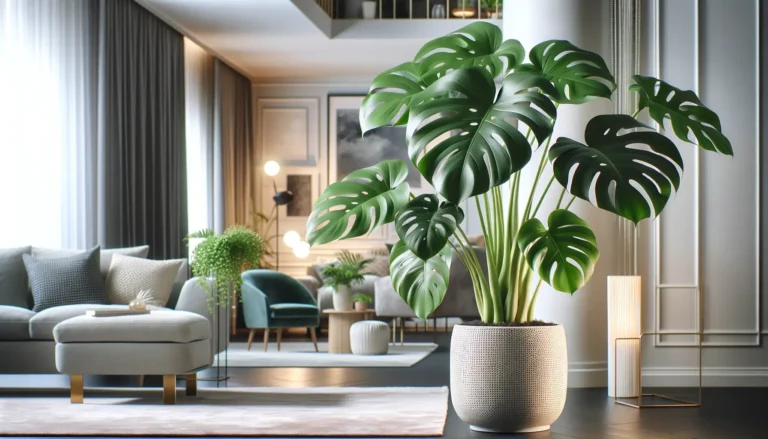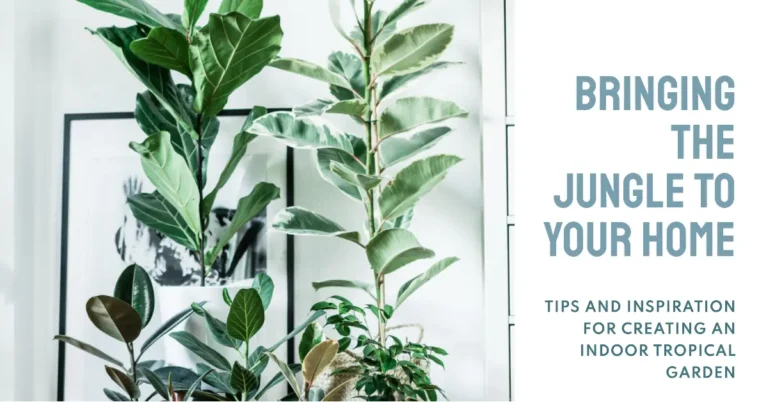Luxurious Growth: Choosing The Best Potting Mix For Tropical Plants
Key Takeaways:
- Choose a potting mix that is well-draining and retains moisture for tropical plants to thrive.
- Look for a potting mix that contains organic matter and nutrients to support healthy growth.
- Consider a potting mix with added perlite or vermiculite for improved aeration and root development.
- Avoid potting mixes that are heavy or compacted, as they can hinder root growth and drainage.
Are you dreaming of lush, tropical paradise right in your own home?
If so, you’ll need to choose the perfect potting mix for your tropical plants.
But with so many options available, how do you know which one is the best?
That’s where I come in! In this blog article, I’ll guide you through the world of potting mix for tropical plants, explaining the importance of the right mix for optimal growth.
I’ll explore different types of potting mix and evaluate the characteristics of an ideal mix.
Plus, I’ll give you tips on using potting mix effectively and answer some common questions along the way.
Get ready to create your own luxurious paradise!
| Potting Mix | Key Features | Advantages | Disadvantages |
|---|---|---|---|
| Peat-based Mix | Rich in organic matter, good moisture retention | – Promotes root growth – Provides good drainage – Nutrient-rich | – May decompose over time – Can become compacted |
| Coconut Coir Mix | Sustainable alternative to peat-based mixes | – Retains moisture well – Lightweight – Naturally pest-resistant | – May need additional nutrients – Higher cost |
| Perlite Mix | Lightweight, excellent drainage | – Prevents soil compaction – Enhances aeration – Allows for root development | – Requires frequent watering – Needs regular fertilization |
| Vermiculite Mix | Improves moisture retention, aids in nutrient release | – Provides good drainage – Retains water and nutrients – Promotes healthy root growth | – Expensive – Can become compacted |
| Cactus Mix | Quick-draining, low organic matter | – Suitable for plants with low water needs – Resistant to root rot – Controls moisture levels | – Often requires additional nutrients – May drain too quickly for some plants |
Understanding the Importance of Potting Mix for Tropical Plants
The right potting mix is vital for the growth of tropical plants, ensuring they receive the necessary nutrients and support.
Key Factors to Consider for Tropical Plants
When choosing potting mix for tropical plants, it’s important to consider factors such as water retention, drainage, nutrient content, pH level, aeration, and root development.
Different types of tropical plants have specific needs, so select the appropriate potting mix accordingly.
Additionally, proper container size, preparation methods, transplanting techniques, watering, fertilization, and maintaining potting mix quality are essential for healthy plant growth.
Exploring Different Types of Potting Mix for Tropical Plants
Let’s dive into different types of potting mix for tropical plants.
Soil-Based Potting Mix
Soil-based potting mix is made primarily from garden soil or earth, mixed with organic matter like compost or leaf mold.
It provides a good structure for plant roots, retains moisture well, and supplies essential nutrients.
It’s ideal for tropical plants that prefer a rich, well-draining medium.
Peat-Based Potting Mix
Peat-based potting mix is a popular choice for tropical plants.
It is made from decomposed organic matter called peat moss.
Peat-based mix retains moisture well and provides good drainage.
It also has a slightly acidic pH level that is beneficial for many tropical plants.
However, it is important to note that peat-based mix may not be sustainable, as peat moss is a non-renewable resource.
Coir-Based Potting Mix
Coir-based potting mix is made from coconut husk fibers and is an excellent choice for tropical plants. It retains water well, provides good drainage, and promotes root aeration.
It also has a neutral pH and is rich in nutrients.
Coir-based potting mix is ideal for plants that prefer slightly acidic to neutral soil and require a well-drained growing medium. It’s a sustainable and eco-friendly alternative to peat-based mixes.

Perlite-Based Potting Mix
Perlite-based potting mix is a popular choice for tropical plants. It’s a lightweight and porous material that helps with drainage and aeration.
Perlite also retains some moisture, making it suitable for plants that prefer well-drained soil.
Just remember to blend it with other components to create a balanced potting mix.
Vermiculite-Based Potting Mix
Vermiculite-based potting mix is a popular choice for tropical plants. It retains moisture well, preventing the roots from drying out, while also providing good drainage.
Vermiculite also helps with nutrient retention and promotes aeration for healthy root development.
It’s great for plants that prefer a lightweight and well-draining mix.

Evaluating the Characteristics of an Ideal Potting Mix
When evaluating an ideal potting mix, consider factors such as water retention and drainage, nutrient content, pH level, and aeration for optimal root development.
Water Retention and Drainage
Water retention and drainage are important factors to consider when choosing potting mix for tropical plants. A good potting mix should have a balance between retaining enough water for the plants to absorb and draining excess water to prevent root rot.
This can be achieved by using a mix that combines organic materials like peat or coir with perlite or vermiculite for improved drainage.

Nutrient Content
Nutrient content is a crucial aspect of a potting mix for tropical plants. It provides the necessary elements for plant growth, such as nitrogen, phosphorus, and potassium.
It’s important to choose a potting mix that is rich in these nutrients to support healthy and vibrant plant growth.
Additionally, some potting mixes may also contain added organic matter or slow-release fertilizers to further enhance nutrient availability for the plants.

pH Level
The pH level of a potting mix is important for tropical plants because it affects nutrient availability. Most tropical plants prefer slightly acidic to neutral pH levels (around 6-7).
Testing the pH of the potting mix using a pH meter or test kit can help ensure the optimal growing conditions for your plants.
If the pH is too high or too low, it can affect plant health and growth. Adjusting the pH with amendments, such as sulfur for lowering pH or lime for raising pH, can help create an ideal environment for your tropical plants.
Aeration and Root Development
Aeration is vital for the root development of tropical plants as it ensures oxygen supply to the roots. It allows the roots to breathe and prevents them from becoming waterlogged, which can lead to root rot.
Good aeration promotes healthy root growth and nutrient absorption.
Selecting the Best Potting Mix for Specific Tropical Plant Needs
Different tropical plants have varying needs when it comes to potting mix, so it’s important to choose the right one for each specific plant.
Potting Mix for Succulents and Cacti
Succulents and cacti need a well-draining potting mix to thrive. A good mix is made up of equal parts of coarse sand, perlite, and potting soil.
Avoid using regular garden soil as it retains too much moisture and can cause root rot.
Potting Mix for Orchids
Orchids require a well-draining potting mix that allows air to circulate around their roots. The ideal mix for orchids is usually a combination of sphagnum moss, bark, and perlite.
This mix retains moisture without becoming waterlogged and provides the necessary support for orchid roots.
Potting Mix for Ferns
Ferns thrive best in a well-draining potting mix that retains moisture. A mixture of peat moss, perlite, and pine bark is ideal for ferns.
Avoid using heavy clay or regular garden soil, as they can hold too much water and suffocate the fern’s roots.
Potting Mix for Tropical Fruit Trees
For tropical fruit trees, a well-draining potting mix with good water retention is essential. Look for a mix with a balanced nutrient content and a slightly acidic pH level.
Consider adding organic matter or compost to improve soil fertility.
Regularly monitor moisture levels and adjust watering accordingly.
Potting Mix for Tropical Flowers
Potting mix for tropical flowers should have good drainage and water retention, as well as a balanced nutrient content.
A mix of soil-based, peat-based, and coir-based potting mixes can work well.
Adjust the pH level to match the specific needs of your tropical flowers.
Aeration and root development are also important factors to consider.
Lastly, choose a potting mix that suits the specific needs of your tropical flowers such as orchids or hibiscus.
Tips for Using Potting Mix Effectively
Get the best results from your potting mix with these tips and techniques.
Choosing the Right Container Size
Choosing the right container size is important for the health and growth of your tropical plants. Here are a few guidelines to consider:
- Start with a container that is slightly larger than the root ball of your plant. This will provide enough space for the roots to spread out and grow.
- Ensure that the container has drainage holes to prevent waterlogging, which can lead to root rot.
- If your plant is already in a small container and you want to transplant it to a larger one, choose a container that is only one size up. Transplanting to a container that is too big can cause waterlogging and hinder root development.
- If you’re starting from scratch, consider the ultimate size of your plant and choose a container that will accommodate its future growth. This will help you avoid the need for frequent repotting.
- Keep in mind that some plants, like succulents, prefer smaller, more compact containers. Research the specific needs of your tropical plant to determine the best container size.
Preparing the Potting Mix
Preparing the potting mix for tropical plants is a crucial step to ensure their healthy growth. Start by choosing the right type of potting mix based on your plant’s needs.
Mix in perlite or vermiculite for improved drainage and aeration.
Add organic matter for nutrient content. Make sure the mix is moist but not waterlogged before planting.
Transplanting and Repotting Techniques
When transplanting or repotting tropical plants, it’s important to follow a few key techniques. Gently remove the plant from its current pot, being careful not to damage the roots.
Choose a new pot that is slightly larger and has good drainage.
Place fresh potting mix in the new pot and position the plant, ensuring it is at the same depth as before. Gently tamp the soil around the roots, and water thoroughly.
Avoid over-watering and place the newly potted plant in an appropriate location for its light and temperature needs.
Proper Watering and Fertilization
Proper watering and fertilization are essential for the health and growth of tropical plants.
Water plants when the top inch of soil feels dry and avoid overwatering.
Use a well-balanced fertilizer with the right nutrient ratios for tropical plants.
Follow the instructions on the label for proper application.
Maintain consistency in watering and fertilizing, but avoid overdoing it.
Maintaining Potting Mix Quality
To maintain the quality of your potting mix for tropical plants, there are a few key things to keep in mind. First, regularly check the moisture level to ensure it doesn’t become too dry or waterlogged.
Second, remove any dead leaves or debris from the surface to prevent mold or pests.
Finally, consider adding organic matter or slow-release fertilizers to replenish nutrients over time. By taking these simple steps, you can ensure the overall health and vitality of your tropical plants.
FAQs – Common Questions About Potting Mix for Tropical Plants
Can I use regular garden soil for my tropical plants?
No, using regular garden soil for tropical plants is not recommended.
Regular garden soil may not provide the necessary drainage, aeration, and nutrient content that tropical plants require.
It’s best to use a specialized potting mix that is specifically formulated for tropical plants to ensure optimal growth and health.
How often should I repot my tropical plants?
How often you should repot your tropical plants depends on their growth rate and the size of their current pot. As a general rule, aim to repot them every 1-2 years.
Keep an eye out for signs such as root overgrowth, poor drainage, or nutrients depletion, which may indicate it’s time for a fresh potting mix and a larger container.
Can I create my own potting mix for tropical plants?
Yes, you can create your own potting mix for tropical plants.
However, it’s important to ensure that you have the right ingredients and proportions.
A good DIY mix for tropical plants could include a combination of organic matter like compost, peat moss, coconut coir, and a mineral additive such as perlite or vermiculite.
Just make sure to research the specific needs of your plants and adjust the mix accordingly.
Will using the wrong potting mix harm my tropical plants?
Using the wrong potting mix can harm your tropical plants. It may not provide the necessary drainage, water retention, or nutrients that your plants need.
This can lead to root rot, nutrient deficiencies, and overall poor growth.
It’s important to choose the right potting mix for your tropical plants to ensure their health and vitality.
What are some signs of a poor quality potting mix?
A poor quality potting mix can have some telltale signs. Look out for these indicators:
- Compacted and heavy texture – If the potting mix feels dense, clumpy, or heavy, it may not have proper aeration and drainage.
- Water retention issues – If the mix has difficulty absorbing water or drains too quickly, it may have poor water retention properties.
- Yellowing or stunted growth – If your plants show signs of yellowing leaves, stunted growth, or wilting despite proper care, it could be due to a lack of essential nutrients in the potting mix.
- Foul odor – A foul smell coming from the potting mix might indicate bacterial or fungal growth, which can be harmful to plants.
- Weed growth – If you notice an increase in weeds within your potted plants, it could be a sign of weed seeds present in the potting mix.
These signs can help you identify a poor quality potting mix and take the necessary steps to improve plant health.
Final Verdict
Understanding the importance of potting mix for tropical plants is crucial for their luxurious growth and overall health. By choosing the right potting mix, you can ensure proper water retention, nutrient content, and pH level, promoting optimal growth and root development.
Different types of potting mix, such as soil-based, peat-based, coir-based, perlite-based, and vermiculite-based, cater to specific plant needs.
By following tips for using potting mix effectively, such as choosing the right container size, proper watering and fertilization, and maintaining potting mix quality, you can ensure the success of your tropical plants. Avoid using regular garden soil and be aware of the signs of poor quality potting mix.
With the right potting mix and proper care, your tropical plants will thrive and bring beauty to your indoor or outdoor space.







